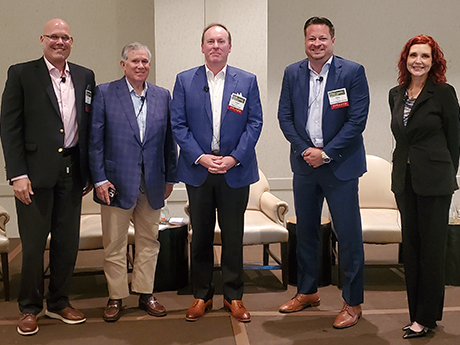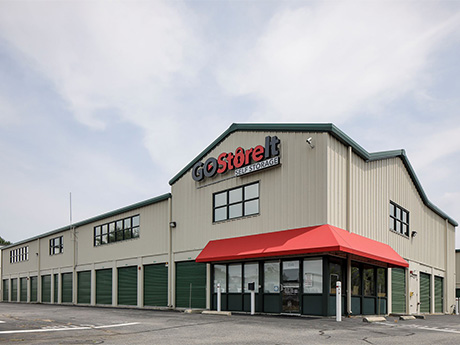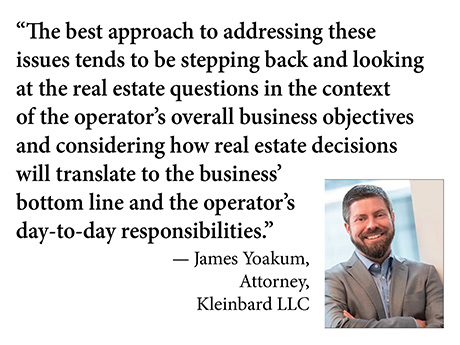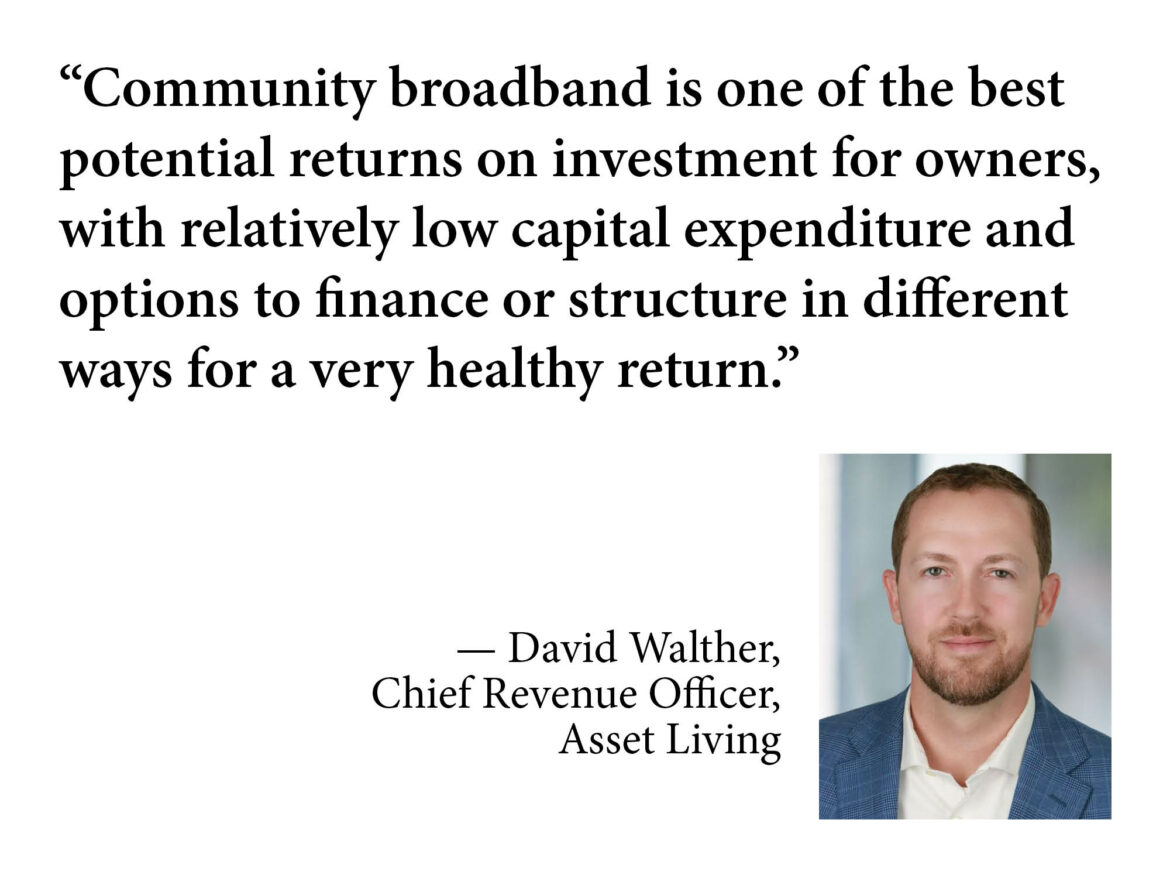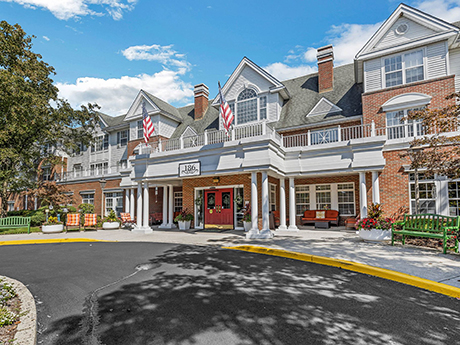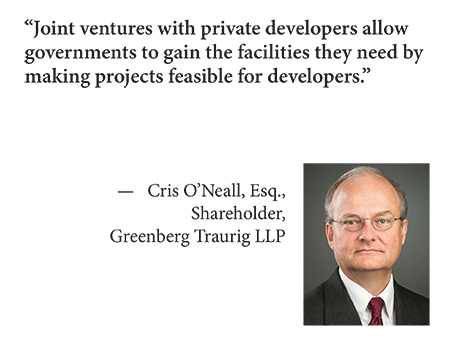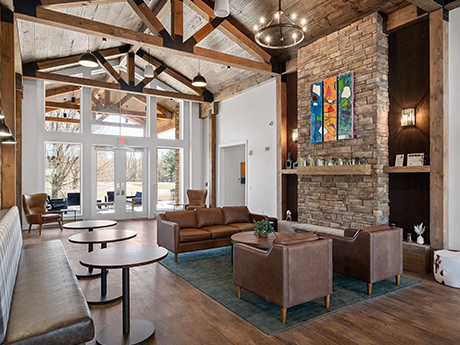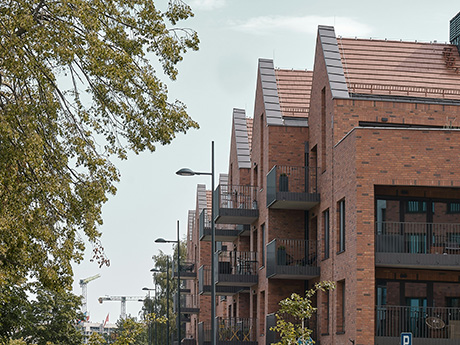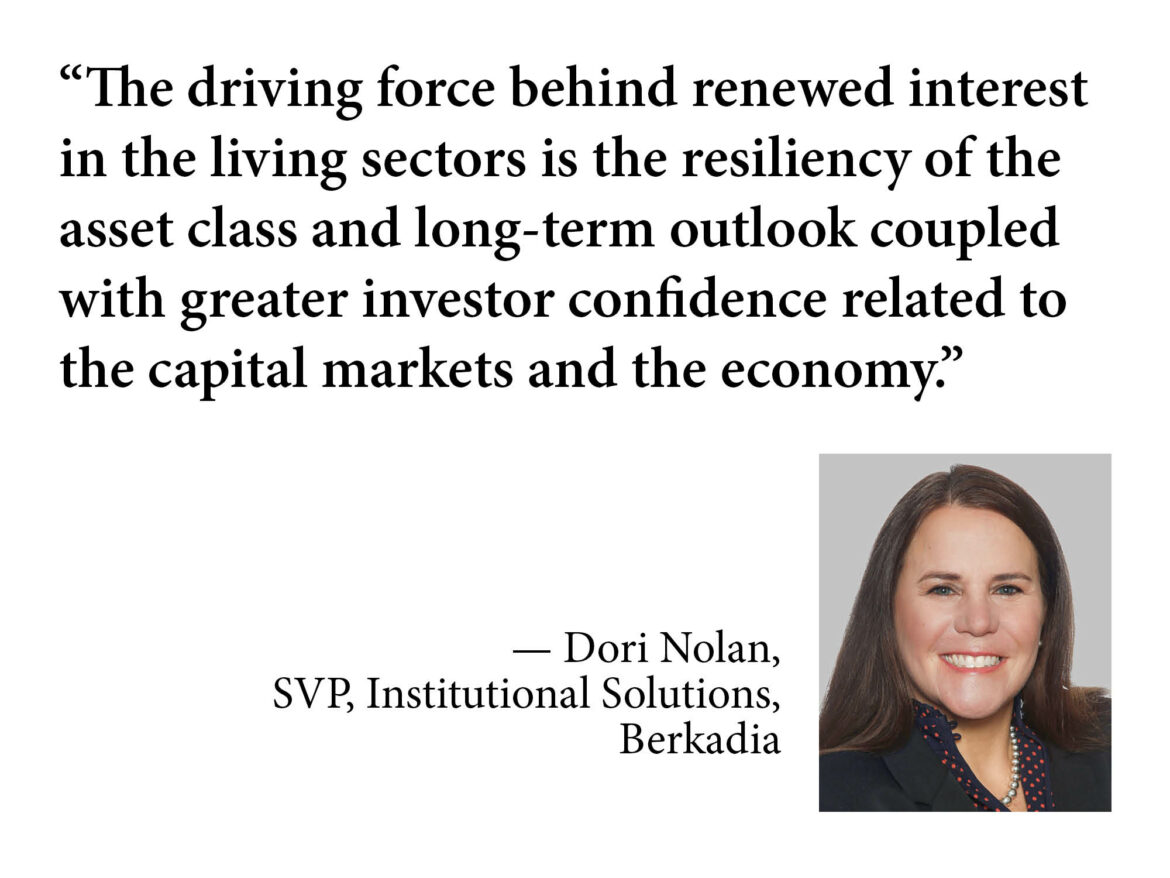By Matt Valley ATLANTA — In an unsettled world, the capital markets have ironically proven to be relatively stable this year. That’s helped pave the way for the rebound in financing across the seniors housing sector, lenders say. But they are quick to add that construction financing remains difficult to secure for most developers. For much of this year, the U.S. 10-year Treasury yield has fluctuated between 4.2 and 4.6 percent, a relatively narrow range compared with the high volatility experienced in the three years prior. In 2022, for example, the 10-year yield started the year at approximately 1.5 percent and reached 4.2 percent roughly 11 months later. Because a large percentage of commercial real estate loans are priced off the 10-year yield, the benchmark rate’s recent stability is significant, say lenders. And there is potentially more good news on the horizon. Editor’s note: InterFace Conference Group, a division of France Media Inc., produces networking and educational conferences for commercial real estate executives. To sign up for email announcements about specific events, visit www.interfaceconferencegroup.com/subscribe. “The Fed has been holding steady for several months in terms of short-term rates. But it looks now — based on what Fed Chairman Jerome Powell said last week in his …
Features
By Katharine Lau, CEO and co-founder, Stuf Following a period of slower activity throughout 2023 and 2024, the self-storage industry is showing clear signs of restored momentum in 2025. According to StorageCafé’s Q1 2025 U.S. Self Storage Sales Report, investment sales volume in the sector hit $855 million nationwide — a notable 37 percent increase from the first quarter of 2024 — suggesting a fresh wave of investor and consumer confidence. While the commercial real estate market continues to face uncertainties, particularly with regard to persistent office vacancies, self-storage is emerging as a stable, demand-driven sector of the industry, propelled by shifting consumer behaviors, flexible business needs and creative adaptive reuse in urban markets. Self-storage demand continues to follow lifestyle shifts. At Stuf, we’re consistently seeing strong growth in the seven markets in which we operate, especially among millennial and gen Z renters, small business owners and remote workers who prioritize proximity, convenience and security when choosing a storage solution. Consumers are increasingly prioritizing smarter spaces that fit into their regular routines. The StorageCafé report shows that interest from large-scale, institutional investors in self-storage has rebounded in 2025, with several eight-figure transactions dotting the map in the first quarter. The …
By James Yoakum, attorney, Kleinbard LLC Many clients of commercial real estate attorneys are full-time, professional real estate investors who live and breathe cap rates, vacancy allowances, loan-to-value ratios and the latest hot adaptive reuse opportunities. However, another large portion of those clients are not real estate obsessives, but rather business owners across a variety of industries who see their real estate needs as just another expense item on the profit-and-loss statement — akin to payroll, utility bills and taxes. This writer also had a similar mix of real estate investor clients and “operating business” clients in his prior career on the brokerage side of the real estate world and has subsequently gained an appreciation for how both types of clients approach transactions. This article offers some key points for brokers, attorneys and other service providers to keep in mind when advising business owners and operators on their real estate needs, wherein operational priorities — rather than traditional real estate investment metrics — are typically key to structuring deals that work long-term. The Big Question: Own vs. Lease? Whether a business should own or lease the real estate that it operates out of is one of the biggest considerations for business …
Enterprising multifamily players are shifting the industry’s views on community connectivity, elevating broadband from a stand-alone amenity into a performance booster for larger real estate strategies. Rather than leave their residents’ connection quality to chance, these developers, owners and managers are contracting with specialized internet service providers (ISPs) to blanket entire properties with high-speed Wi-Fi access for the best possible online experience. “On the operations side, rolling out community Wi-Fi lets us give residents the full connectivity they expect from other parts of their life, because all areas of the property function together for a seamless experience,” says David Walther, chief revenue officer at third-party property manager Asset Living. Asset Living manages more than 300,000 units at client communities including conventional multifamily, student housing, affordable and other property types across the country. At nearly all student housing and a growing share of the multifamily communities Asset Living manages, matrices of Wi-Fi access points keep residents and property teams alike online as they traverse the property, from inside residential units to pools, fitness centers, garages and other common areas. Earlier this year, Asset Living made internet service provider Pavlov Media a preferred national partner for bulk managed Wi-Fi at its communities. …
By Beth Mattson-Teig Real estate investment trusts (REITs) have their foot firmly on the gas when it comes to acquiring seniors housing assets, and they’re taking full advantage of the opportunity to buy at below replacement cost. The appetite to grow portfolios, particularly on the private pay side of independent living, assisted living and memory care, comes as no surprise given the combined tailwinds of growing consumer demand and a slowdown in new supply. While the aging population has led to accelerating demand, the high cost of development has forced a sharp pullback in new deliveries. Between now and 2035, the 85-plus population is expected to grow nearly 60 percent, increasing from approximately 7 million to more than 11 million. At the same time, developers are tapping the brakes on new projects. In the first quarter of 2025, seniors housing construction starts in 31 primary markets tracked by NIC MAP totaled 1,076 units for properties that are a majority independent living or majority assisted living, the lowest count since 2009. “Frankly, investors have been waiting for this boomer generation to hit and start to move into seniors housing for some time. It’s been anticipated, and it’s now actually starting to …
By Cris O’Neall, Esq. of Greenberg Traurig LLP With the number of public-private partnerships for constructing public facilities on the rise, communities across the country wrestle with the question of how to treat such arrangements for ad valorem property tax purposes. In most instances, private developers and taxing entities take opposing positions on the issue. Public-private joint ventures have become a popular strategy to achieve community objectives through collaboration with private developers. To construct a particular facility, a municipality or other government will typically provide subsidies or other financial incentives to encourage participation in the project by a private-industry partner or partners. These subsidies, which may come in the form of grants or tax credits, often lead to property tax contention. Some taxing authorities include the subsidies or tax benefits granted to the private developer in the taxable assessed value of the real property. In contrast, private developers view such subsidies or benefits as tax-exempt intangible property that should not be included in assessed values. Here are a few common incentives and their property tax implications: Low-Income Housing Subsidies The treatment of federal subsidies for operation and construction of low-income housing became an early battleground in the ongoing conflict over …
By Dan Sullivan, Modwall Today’s need for agility in both work environments and commercial spaces stems from several factors, from evolving understandings of workplace strategy, to shifting tenant needs, and even the demand for the adaptive reuse of aging building stock. Driven in part by these developments, the concept of “modularity” has surged in popularity. But with all of the buzz, the true meaning of the term has become conflated with the concepts of demountability and reconfigurability. In common parlance, many prefabricated solutions are being marketed as modular, and thus assumed to be demountable or reconfigurable. And while they may, in fact, be manufactured off site, they are merely “prefabricated” and lack the flexibility to adapt to evolving space needs. Truly reconfigurable design and construction is something else entirely. It’s not just about building faster, but smarter. A system that’s truly reconfigurable isn’t just modular or prefabricated — it’s reconfigurable by design; primed for disassembly and reconfiguration, and simple enough to break down traditional labor barriers. These systems work to extend the life cycle of commercial interiors, reduce waste and ultimately yield spaces that evolve in real time alongside those that use them. Disassembly as the baseline With fluctuating occupancy …
By Diane Batayeh, Village Green To be successful at multifamily property management involves equal parts of communication, alignment and trust. There are several stakeholder groups to consider when making decisions about how best to operate and set up an apartment community for long-term success. Between residents, employees and owners, there are differing and sometimes conflicting objectives and perspectives to consider. In today’s quickly evolving multifamily landscape, satisfying everyone can be challenging and it requires a delicate balance to maintain all stakeholders’ satisfaction while also achieving their respective goals. With the right approach, however, multifamily executives can successfully navigate the wants and needs of all parties and effectively sustain their trust and satisfaction while positioning the property to achieve economic success. Fostering connections In multifamily property management, everything matters — from the property’s aesthetic appearance to the friendliness of onsite staff to the property’s digital identity and website navigation experience. These touchpoints are often referenced by both prospects and residents when evaluating their living experience, making it imperative to maintain and uphold a positive impression. To protect a property’s reputation and best serve residents, it’s critical to remain aware of their impressions through regular resident surveys that measure preferences and satisfaction …
AcquisitionsContent PartnerDevelopmentFeaturesIndustrialLeasing ActivityLee & AssociatesLoansMidwestMultifamilyNortheastOfficeRetailSoutheastTexasWestern
Lee & Associates’ Report: Q2 Net Absorption Declines Across All Property Sectors Except Multifamily
Lee & Associates’ 2025 Q2 North America Market Report looks back at shrinking (or negative) net absorption for industrial, office and retail sectors in the last quarter. Meanwhile, multifamily tenant demand beat previous expectations in the same three months, as a feared recession failed to materialize. The mix of factors for absorption varied by property type: industrial and office markets saw increases in vacancy, while competition for retail space remained high, even in the face of high-profile closures. Lee & Associates’ full market report is available to read here (plus detailed vacancy rates, cap rates by city, market rents, square footage information, information on Canadian markets and more). The recaps for industrial, office, retail and multifamily sectors below detail trends and outlooks for each property sector in the remainder of 2025. Industrial Overview: Vacancies Rise, Rent Growth Slows Concern over the impact of tariffs has added to slowing tenant growth in logistics and manufacturing across North America. But the continued easing demand has resulted in more choices and benefits for users that have been subjected to a prolonged stretch of steep rent growth. Vacancies in the United States have risen to 7.4 percent, a decade-long high, while deliveries continued to outpace tenant expansion. Net absorption fell …
Content PartnerDevelopmentFeaturesLeasing ActivityLoansMidwestMultifamilyNortheastSoutheastTexasWestern
Institutional Investors Resume Activity Amid Stabilizing Conditions
Since the Federal Reserve began raising rates in March 2022 to combat inflation, the real estate market has faced challenges such as rising interest rates, capital market volatility and economic uncertainty. These factors caused many institutional investors to pause their real estate investment activities compared to historical levels. Despite ongoing volatility, investors are gradually re-entering the market, driven by several factors. Key reasons for the pause included a challenging fundraising and capital markets environment, the unpredictable cost of capital, a scarcity of transactions leading to a lack of pricing discovery and widening bid/ask spreads. Some institutional investors were impacted by the “denominator effect,” resulting in an overweighting to real estate and the need for portfolio rebalancing. Additionally, to create bolster funds for other portfolio issues, some institutional investors entered redemption queues seeking liquidity. Broader capital market constraints reduced the availability of equity, while simultaneously driving a growing preference for structuring investments as debt rather than equity among those who remained active. During this period of muted transaction activity, private investors capitalized on the market’s dislocation. These investors increasingly prioritized their acquisition efforts toward newer vintage core and core-plus assets over value-add or development opportunities, reflecting a shift toward higher quality …


